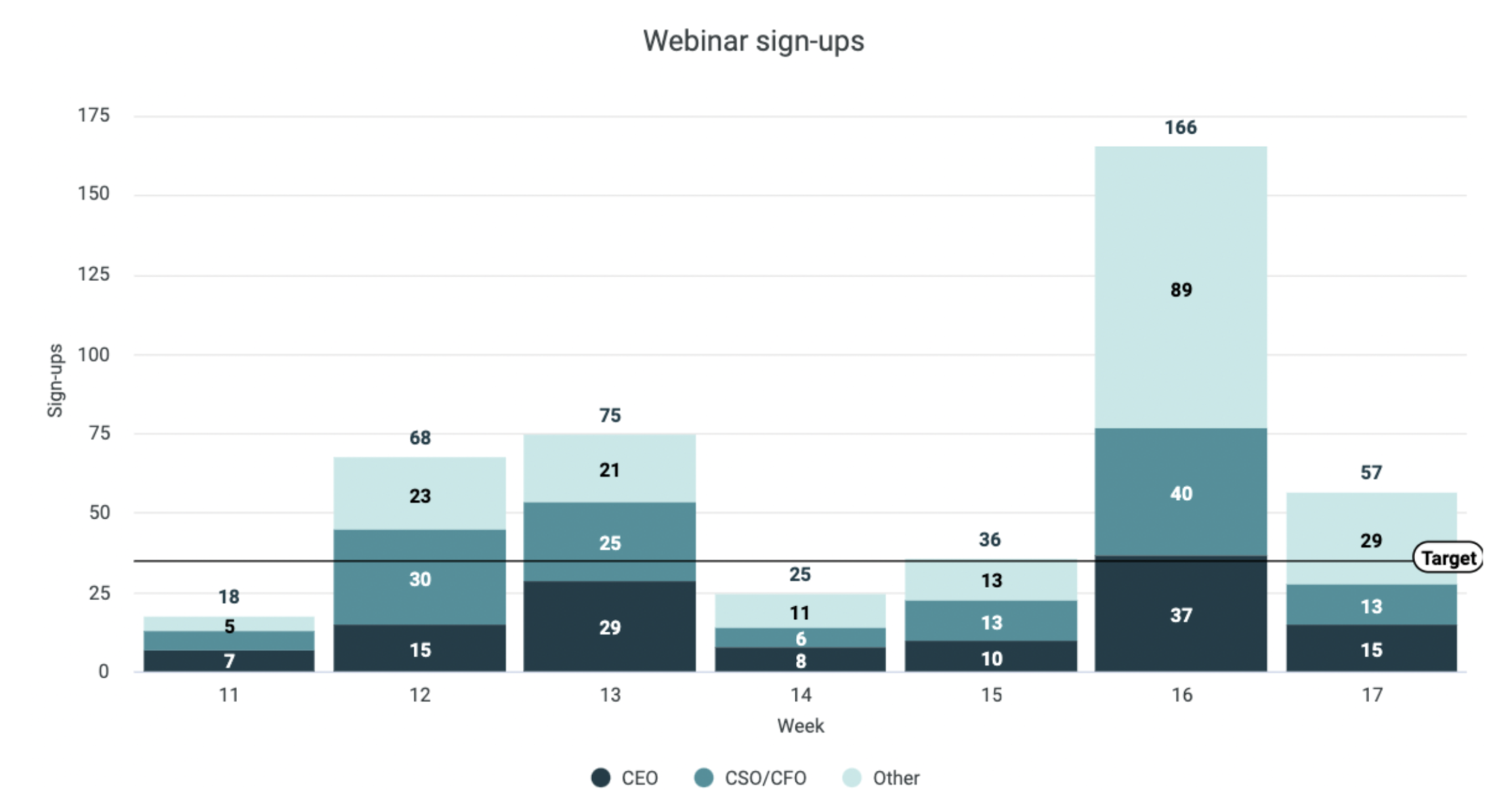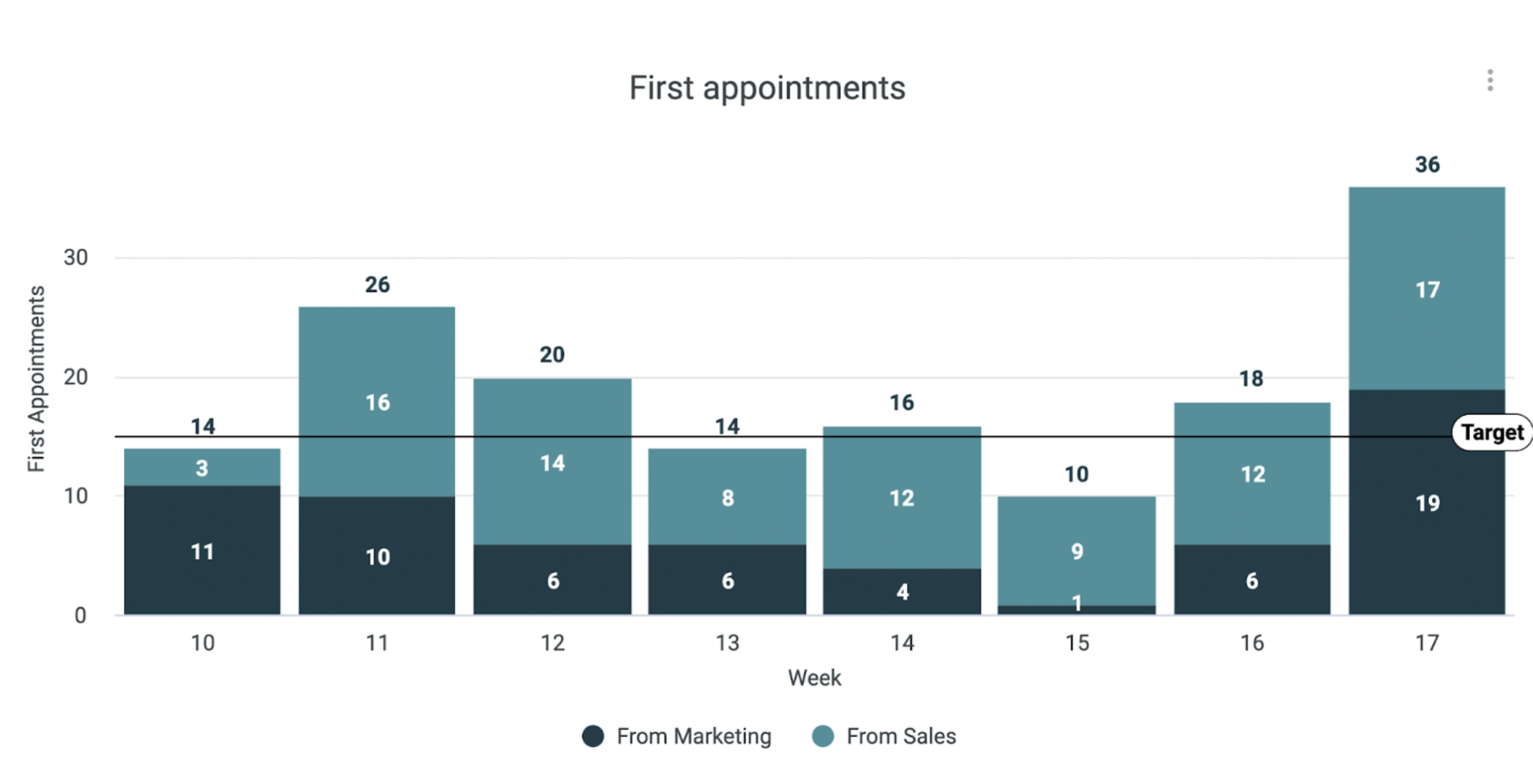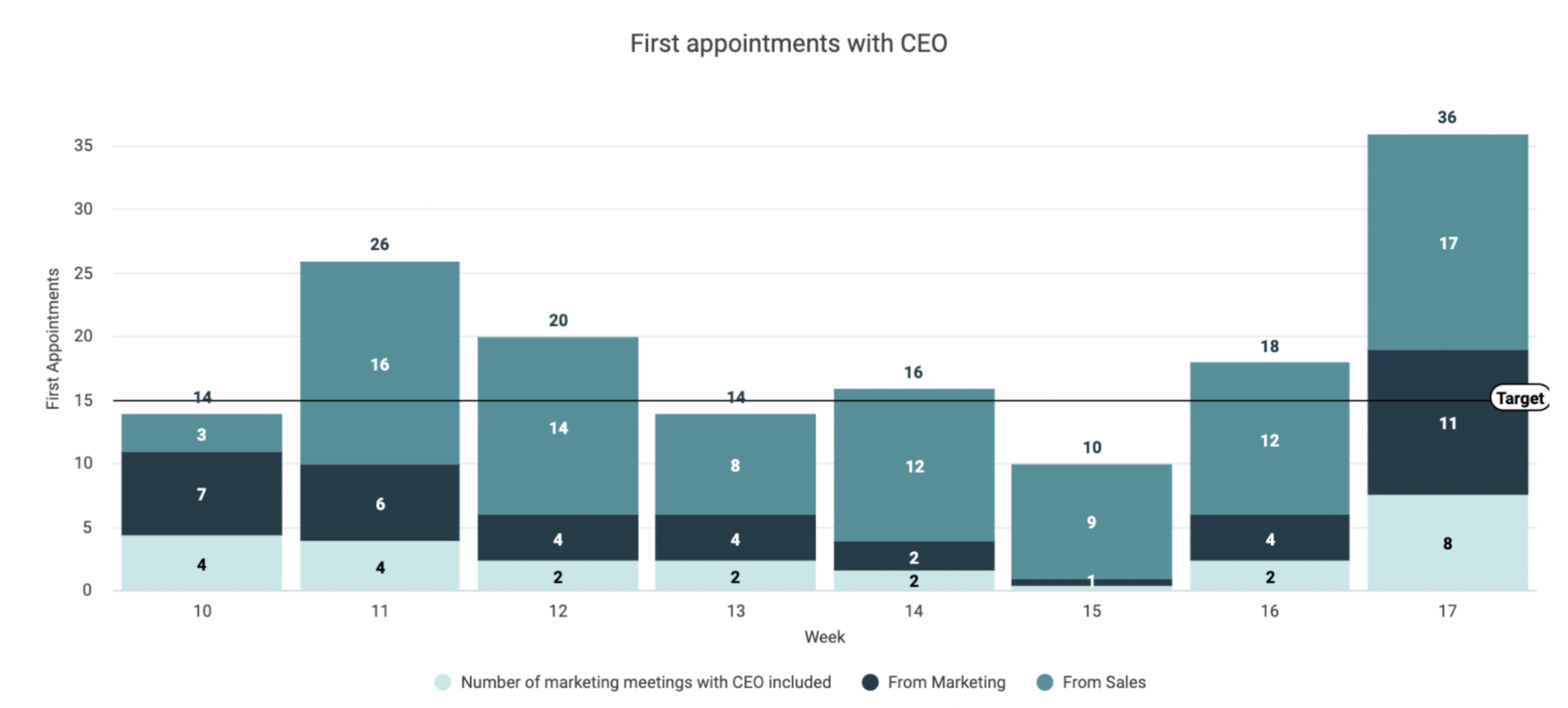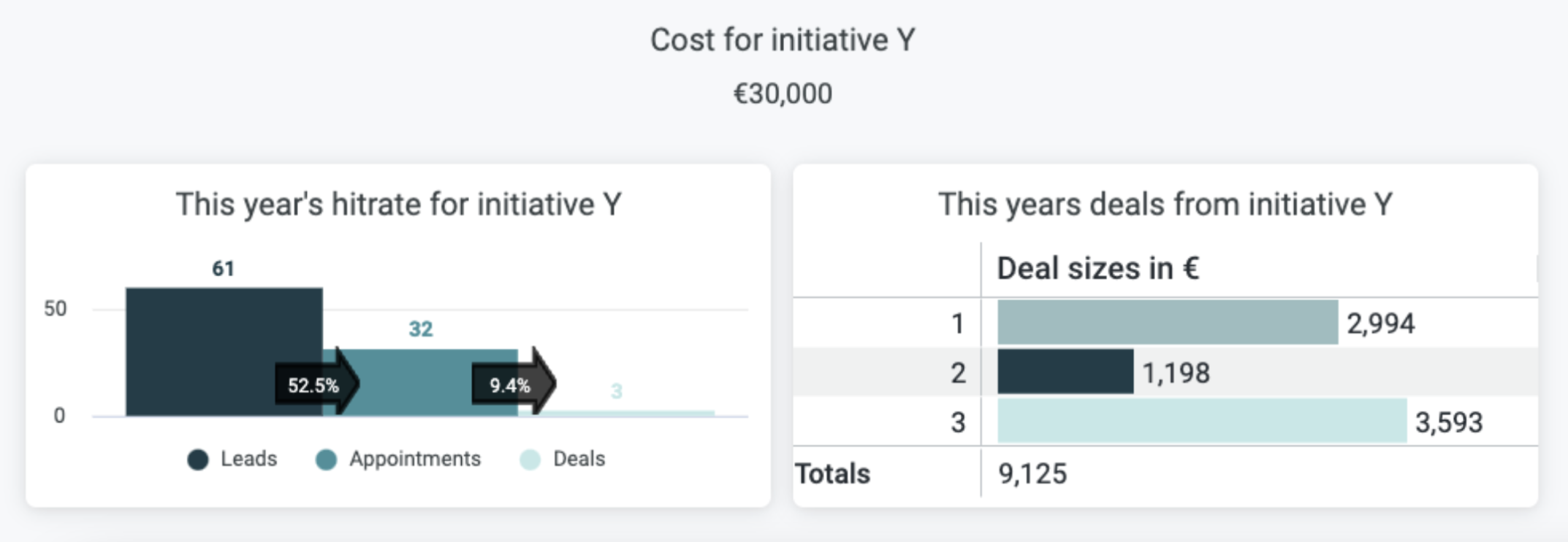Many B2B companies unwittingly overlook their actual marketing performance. That's because they're too hung up on a straightforward but oh-so misguiding figure—the number of generated leads. The truth is that your marketing team isn't necessarily doing a good job just because they excel at this number.
Yet, many of us rely too heavily on it. I know we did. Perhaps like us, your numbers are growing too, along with your spending. Everything looks promising, but then (spoiler alert) you realise none of them became deals. At that point, you've already wasted a substantial part of the quarter's budget.
Do you really know what marketing is generating?
In the end, it all comes down to marketing's impact on the bottom line. You wouldn't drive a car blindfolded. So, why limit yourself to a key performance indicator (KPI) that makes you go straight when the road turns? We need to be responsive. That's why we bent our marketing KPIs back and forth to figure out what drives revenue growth. And today, I'll share the results with you.
Shift focus from quantity to quality
What we measure, happens. That's why it's so essential to track the right metrics.
It's not until you start measuring marketing KPIs correlated with sales that you'll see a boost in revenue.
Leaders that primarily focus on leads often increase targets every quarter. That typically derails the marketing team. All their efforts go into generating the wished-for quantity, causing them to lose track of what's important—if the leads were any good, to begin with. For a fast-growing company, it's better to have fewer leads that create a lot of revenue than the opposite. That's why shifting the organisation's focus from quantity to quality is crucial. And to let the latter determine your course of action, after all, revenue pays the bills, not leads.
Don't count the people you reach; reach the people that count
First things first, you need to formalise what a good lead is. We looked at the data to figure this out for us; more on how we did that here. I encourage you to dig deep into the numbers. Look at how different types of customers affect revenue in the long run. For example, companies that we thought were great initially grew the least over time. Besides, they often terminated their contract within the first months.
When you know who you want to reach, you can create target lists of good-fit customers. Start engaging with them right away, parallel to the regular marketing activities. That helps marketing increase the quality of leads over time.
Three marketing KPIs to get that bottom line
We found three marketing KPIs that stood out regarding impact on revenue. Two of these are leading KPIs, which help predict marketing's contribution to sales. In other words, they help you take action before it's too late (if you're moving in the wrong direction). The other is a lagging indicator that enables you to evaluate what works and doesn't.
KPI #1: Number of engaged decision-makers
We close 79% of deals where a CEO is involved in the first appointment, compared to 23% when they're not. For us, and most B2B companies, it's essential to talk to the decision-maker to make the sale. That's why we want, and need, to engage these people in our marketing.
So break down the data. Look at how many CEOs, or equivalent, watched your webinar or read your newsletter. Having many people engaged is great, but you won't see sales coming unless you engage the right ones.

This graph illustrates how you can measure engaged CEOs in a marketing dashboard. The numbers are fictional.
The KPI indicates problems such as bad quality or invisibility
Monitoring this KPI weekly will make it clear if you're attracting the wrong audience to your content. If you are, this could mean one of two things: that your content lacks quality or that you're not visible to the right audience. Try tweaking the copy or adjusting the target audience for your ads to see if you get back on track. This also applies to the opposite. If your numbers are skyrocketing—you know you're doing something right. And it's very likely to generate appointments and later sales.
Pro tip: keep track of how your database grows
Also, measure how your database of engaged decision-makers grows over time. This is great to understand how many people are bonding with your brand. If your database grows, you get better prerequisites to scale sales.
Fun fact: Daniel Priestly advocates the 7-11-4 rule in his book Oversubscribed. Research shows that the human brain forms connections based on three core ingredients: time, interactions and locations. Spending more than 7 hours with someone makes them go from an acquaintance to a friend. People with more than 11 interactions with a brand are more likely to buy. And seeing people in different places creates a stronger bond. What the 7-11-4 formula says is basically to apply this to your own market. Make sure you have 7 hours of content the person can engage with, interact with them 11 times and in 4 different places. Just imagine the time you'll save and the increased number of warm leads you'll get by working on this now.
KPI #2: Marketing generated first appointments
We can all agree that booked appointments are a great indicator of future sales. However, not all B2B companies measure how many of these came from marketing. That's an essential KPI to follow.
Bad leads or an underperforming sales team?
Marketing-generated appointments enable you to understand lead quality and how well the sales team performs. A sudden decrease could mean that something worsened the lead quality. Maybe the marketing team tweaked a campaign that stopped the good leads from coming in? This KPI alerts you when there's still time to revise or change tactics before significantly affecting revenue.
This graph illustrates how you can visualise marketing-generated appointments in a dashboard. The numbers are fictional.
In other cases, you dig and find that the leads are a good fit. That would point the finger toward the sales team. Are they calling the leads? Is the pitch working? Are they in need of coaching? Don't pour money into marketing if sales aren't making the most of their leads.
At Upsales, we keep track of last week's marketing appointments in relation to the previous eight weeks. Comparing this number to how many appointments the sales reps generated is also valuable. You'd like to aim for a ratio that's increasing.
Pro tip: Look at decision-maker meetings to predict income streams
Add a dimension of how many of the marketing-generated first appointments had a decision-maker involved. As you now know, these meetings are more likely to improve your bottom line. To avoid confusion, make sure it's clear who's considered a decision-maker and who's not.

This graph illustrates how you can visualise marketing-generated appointments and the number of meetings with a CEO in a dashboard. The figures are fictional.
KPI #3: Revenue from marketing (per initiative!)
The last KPI is about revenue—our ultimate goal. For many companies, the chain is broken. They don't know what leads became deals. Others measure it but don't do more than state that "this revenue came from marketing".
Revenue is a lagging KPI, but when you cluster it, it gives you good material for decision-making.
We tested a new lead gen initiative for two-three years and then decided to look at the numbers. We knew we got a lot of appointments from the service. And our sales executives always talked positively about the lead source. However, looking carefully, it turned out that only a few had become deals. These deals were small and didn't even make up the premium we had paid to use the service. You can also include expansions in your analysis to better understand the overall impact on revenue.

This graph illustrates how you can measure results and revenue from specific initiatives. The figures are fictional.
Attribution is far from linear, but it's important to follow up on what you can. Especially lead gen initiatives. Use this approach more sparingly on brand-building ad campaigns. They tend to convert people further down the funnel and often through another source.
The best marketers focus on what works, not on doing everything
These three KPIs will steer your marketing team towards doing the stuff that actually creates sales. Because if you're serious about revenue growth, you'll need to cut some things off. It's unavoidable. Doing everything half-bad won't give you the growth pace you desire. So make well-informed tactical choices and stop measuring marketing performance solely on leads.
/ Daniel Wikberg
CEO & Founder of Upsales









